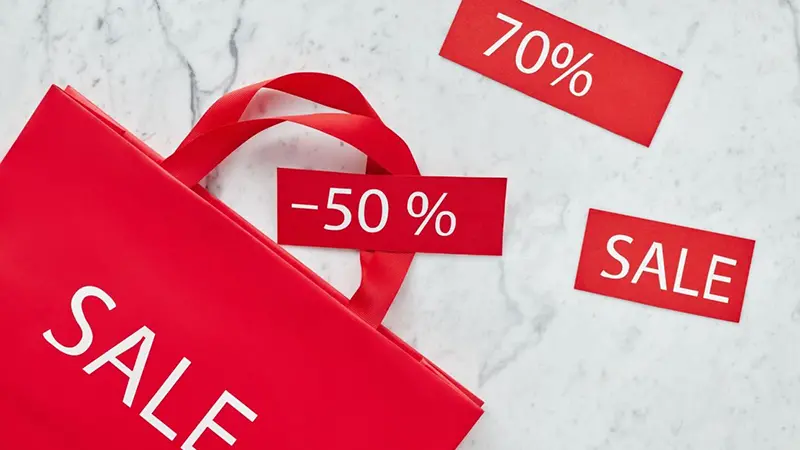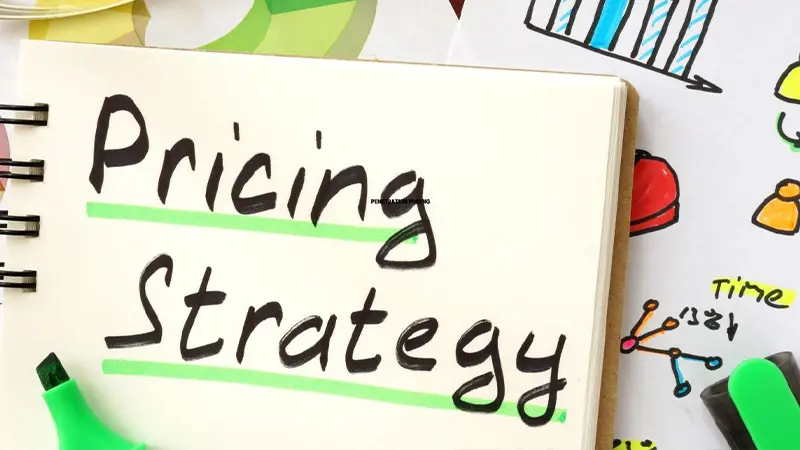
How to Price Print on Demand Products: Ultimate Guide (2025)
Go too high with the prices, and you will turn buyers away. Conversely, if you set them too low, you may not even cover your costs! The trick to pricing is to find the sweet spot between where customers see value and where you still turn a healthy profit.
When it comes to how to price print on demand products, there are a few key factors to keep in mind. From production and shipping costs to market competition, every element contributes to getting the right print on demand pricing that works for you and your buyers.
What is Price Print on Demand?
Price print on demand is about figuring out how much to charge for products you don’t physically stock until a customer orders them. Since production happens on demand, your costs will vary based on things like manufacturing, shipping, and platform fees. The goal is to set a price that covers all these costs while leaving room for profit.
Unlike traditional pricing models where you may have bulk inventory to consider, print on demand gives you flexibility and demands careful planning. You need to price your products competitively to attract buyers while ensuring that every sale is still worth your time and effort.
Why Pricing Products Appropriately Matters
Getting the price right is crucial because it impacts both your sales and your brand’s reputation. Price something too high, and potential buyers may feel it’s out of reach. Go too low, and you risk underselling the value of your product—or worse, you might not cover your costs. Pricing isn’t just about setting a number; it’s about finding a balance that works for both you and your customers.
Proper pricing significantly affects how your customers perceive the brand. Reasonable pricing indicates that you are paying attention to the market and delivering customer value. This creates trust and loyalty, which leads to return business. On the flip side, prices that feel off can raise doubts. You want customers to feel confident that they’re getting something worth their money while keeping your business in the green.

Evaluate Your Overall Cost in Print on Demand
Before you start pricing your print-on-demand products, it’s important to get a clear idea of your overall costs. Knowing the costs upfront allows you to price your products in a way that covers all expenses while leaving room for profit. Let’s break down the key areas of cost you’ll need to evaluate.
Design Costs
When it comes to design, you have a couple of options:
- Hire professional designers or buy digital art:
If you’re looking for quality designs, you can find talented freelance designers online on platforms like Fiverr and Upwork. You can hire a designer to create custom work for you, or purchase ready-made digital art that fits your products.
Just remember, professional designers come with varying price tags depending on their experience, and the design costs can vary depending on experience levels. Although these costs can quickly add up, this investment in quality artwork might just pay off when your designs stand out from the competition.
- Create designs on your own:
If you’re more hands-on, using design tools like Adobe Creative Cloud or Canva Pro can help you create your own designs. These platforms give you all the flexibility you need to produce unique, eye-catching designs.
However, keep in mind that these platforms come with subscription fees, and the time spent designing is also a factor. While it’s a budget-friendly option compared to hiring someone, you’ll still need to account for tool costs and any learning curve involved.
Production Costs
After you have your design, the next big consideration is production cost.
Production costs cover everything from printing the design out to packaging the item for shipping. The exact price per unit will depend on the type of product you sell. These costs must be taken into account when you devise a price strategy. It is important that you make sure you cover the cost of doing business and also make a decent profit.
Some print-on-demand partners offer discounts for bulk orders to assist in managing production costs. This is an excellent strategy to lower per-item costs if you anticipate more sales volumes. For example, Inkedjoy offers discounts for bulk orders that can help keep production costs low, especially if you are a seller. This helps to maintain a higher level of pricing competitiveness while still preserving your margins.
In addition, Inkedjoy provides a variety of products with the ability to choose what you make available for sale and at what margin, allowing more cost control.

Shipping Costs
Shipping costs can be tricky, as they depend on factors like where the product is going, how much it weighs, and even the size of the package. Each print-on-demand provider will have its own pricing setup for shipping, so it’s important to know how this will influence your total expenses.
- Customer Pays for Shipping:
One common approach is to pass the shipping cost directly to your customers. This way, you keep your product prices clean and simple without worrying about eating into your profits.
However, shipping costs can sometimes surprise buyers at checkout, and that might cause them to rethink their purchase, especially if the fees are high.
- Offer Free Shipping:
Free shipping is a favorite tactic among online sellers because it’s an excellent way to encourage more sales. Everyone loves the idea of getting something without an extra cost.
But here’s the catch—it’s not really free. You’ll need to roll the shipping fees into your product price so that you’re still covering the cost without losing out on profit. It’s a great promotional tool, but be mindful of how much it raises the overall price of your items.
Tip: If you go the free shipping route, make sure the increase in your product price is reasonable so customers don’t feel like they’re overpaying. The key is balancing shipping costs while keeping your customers happy.
Website Costs
Running an online store comes with its own set of costs, depending on how you choose to set up your website. Here are the most common expenses:
- Ecommerce platforms: If you’re using platforms like Shopify or BigCommerce, expect to pay a monthly subscription fee. These platforms usually offer built-in tools to make managing your store easier, but the subscription cost can vary based on the plan you choose.
- Ecommerce marketplaces: Selling on platforms like Etsy or Amazon means you’ll be paying listing fees, payment processing fees, and transaction fees. While these costs can add up, they offer built-in audiences, making it easier to reach customers.
- Running your own website: If you prefer full control over your store, you’ll need to purchase a domain name and hosting service. These are annual or monthly expenses, but they give you more flexibility over how your website operates.
Marketing Costs
Marketing plays a crucial role in attracting customers to your print-on-demand store. Here are a few marketing expenses you might encounter:
- Paid ads: Running ads on platforms like Google Ads or Etsy Ads can help boost visibility and drive traffic to your store. Keep in mind that this is an ongoing expense.
- Influencer marketing: Partnering with influencers can be an effective way to reach a targeted audience. However, influencer rates can vary depending on their follower count and engagement.
- Social media ads: Platforms like Facebook and Instagram offer targeted advertising options, which can help you reach your ideal customers. These can be budget-friendly and scalable based on your marketing needs.
Taxes
Taxes are an important aspect of any business, and the amount you owe will depend on where your business is located. Different regions have different tax laws, so it’s essential to stay informed to avoid unexpected costs down the line.
- Consult a tax specialist: To ensure you’re in compliance and avoid potential issues, it’s wise to consult with a tax professional. They can guide you through the specific requirements for your business and help you prepare for any liabilities.

Other Fees
Beyond the major costs, there are a few additional fees you may encounter when running a print-on-demand store:
- Ecommerce platform upgrades: Many platforms offer premium services or tools that can enhance your store’s functionality. These upgrades typically come at an extra cost, so be sure to account for them if you decide to use them.
- Payment processors: Services like PayPal or Stripe charge processing fees for each transaction. While the fees are usually small, they can add up over time if you’re processing a high volume of orders.
- Internet fees: Don’t forget the basics—your internet connection is essential for managing your store and keeping operations running smoothly. This cost will depend on your provider and location, but it’s something to factor into your overall budget.
Calculate Profit Margin
When pricing your products, it’s essential to understand how to calculate your profit margin. This simple formula can help you figure out how much you’re making from each sale:
Retail Price = Production Price + Profit Maigin
To break it down: first, determine the cost of your product, which includes design, production, and shipping expenses. Next, decide on a profit margin that works for your business. A typical profit margin for print-on-demand businesses falls between 20% and 40%. This range helps you stay competitive while ensuring you’re making a healthy profit.
It’s crucial to price your products within the market’s general “acceptable” price range. If you set your prices too high, you might scare away potential buyers. Conversely, pricing too low might hurt your profitability. Striking the right balance is key to maintaining both customer interest and a profitable business.
For a more precise calculation, tools like Inkedjoy’s price calculator can be incredibly helpful. This tool lets you input your costs and desired profit margin to find a retail price that works for you. It’s an excellent way to ensure that your pricing strategy is both realistic and profitable, helping you make informed decisions without a lot of guesswork.
Decide Product Pricing in Three Ways
When setting prices for your print-on-demand products, you have three main approaches to choose from, each with its own advantages and challenges:
Prices Above Average
Setting your prices above the market average can help establish a strong brand image and convey high-quality customer experiences. This strategy works well if your products offer something extra, like premium materials or unique designs.
By positioning your brand as a high-end option, you attract customers who are willing to pay more for perceived value. Just be prepared to deliver on your promises—excellent customer service and top-notch quality are essential to justify the higher price tag.

Average Market Prices
Pricing your products at the average market rate is a safe and reliable approach. It aligns with what customers expect to pay and can make your products more accessible to a broader audience. This method helps you remain competitive without risking customer alienation. It’s a good middle ground if you’re starting out and want to build a steady customer base.
With average pricing, your focus can shift to differentiating your products through marketing and customer service rather than price alone.
Prices Below Average
Offering lower prices can be a great way to attract customers, especially if you’re entering a crowded market or aiming to gain quick traction. Lower prices might entice buyers looking for a bargain, and it can help you stand out. However, there are risks involved. Pricing too low may lead to insufficient coverage of your expenses and could impact your profit margins.
Additionally, customers might question the quality of your products if they’re priced significantly lower than average.
Adjust Your Pricing Regularly
Keeping your pricing strategy up to date is crucial for staying competitive and meeting market demands. Here are three key areas to focus on:
Keep Up with Market Trends
Understanding market trends is essential for setting prices that reflect current demand and consumer preferences. Start by identifying your target market and researching what they are looking for in products like yours.
Are there emerging trends or shifts in consumer behavior? For instance, if eco-friendly products are becoming more popular, you might need to adjust your pricing or product offerings accordingly.
Observe Competitors
Keeping an eye on your competitors can provide valuable insights into pricing strategies. Research how competitors price their products and watch for any fluctuations. Are they running promotions or adjusting prices due to supply chain changes?
Understanding the reasons behind their pricing shifts can help you make informed decisions about your own pricing. For example, if a competitor lowers prices due to a sale or overstock, you might consider a strategic adjustment to remain competitive or offer a unique value proposition.
Pay Attention to Seasonal Trends and Special Occasions
Seasonal trends and special occasions often present opportunities to adjust your pricing. Events like Black Friday, Cyber Monday, or holiday seasons are prime times for launching discounts or special promotions.

Consider how these events might impact consumer buying behavior and adjust your pricing or run targeted promotions accordingly. Offering discounts during these periods can boost sales and attract new customers, but remember to factor these temporary price changes into your overall strategy to ensure they align with your long-term business goals.
Tips for Pricing Strategies
Anchor Pricing
Anchor pricing is a strategy where you set a higher initial price to make subsequent discounts appear more appealing. For instance, if you first list a product at $100 and then offer it for $70, customers will see the $70 price as a great deal in comparison to the original $100.
- Pros: This approach can increase sales by making discounts feel more enticing. It also helps set a higher perceived value for your products, giving customers the impression they’re getting more for their money.
- Cons: Overusing anchor pricing might lead to customers questioning the genuine value of your products or feeling manipulated.
Dynamic Pricing
Dynamic pricing adjusts the price of your products based on real-time factors such as demand, time, or market trends. For example, during peak demand periods, prices may increase, while they may decrease during slower times.
- Pros: It allows you to maximize profits by charging higher prices when demand is high and remaining competitive when demand is low. It’s also flexible and can help you adapt quickly to market changes.
- Cons: Customers may become frustrated with constantly changing prices, especially if they feel they’re paying more at certain times without a clear reason. This strategy requires a solid understanding of your market and the ability to track trends effectively.
Discount Pricing
Discount pricing is a common strategy where you temporarily lower the price of your merchandise to attract customers. Examples of these discounts include percentage discounts (for example, 20% off), dollar amount reductions (for example, $10 off), limited-time offers, and special promotions on items. This creates a sense of urgency and encourages customers to make the purchase now rather than later.
- Pros: Offers can generate high levels of sales and help to clear old stock, pulling the desire for some products. They are also effective in bringing in new customers who might not have purchased from you, and offering some deals can add to customer delight.
- Cons: If customers get too used to sales and are continuously offered discounts, this has a negative impact as they assume all products will go on sale sometime soon, so they hold off on purchasing until the next time. This can slowly damage the perceived quality of your products and eventually make it very difficult to sell at full price.
Penetration Pricing
This is a strategy in marketing that involves setting an initial low price for the introduction of a new product or service into a segment of the market. Increase your price slowly as more and more customers start to come.
- Pros: It is a powerful way to get into competitive markets and bring customers fast! It builds your brand, and it fosters initial adoption.
- Cons: Pricing too low will either yield low profits or losses if the same price increase dissuades customers from purchasing later. If your customers associate your products with low prices, it may also devalue your brand.

Wrap Up
Finding the right price for your print-on-demand products can feel like a balancing act, but it’s key to your success. By understanding the costs involved and applying smart strategies, you can set prices that not only cover your expenses but also attract buyers.
Whether you’re learning how to price print on demand products for the first time or refining your approach, focusing on effective print on demand pricing strategies will keep you ahead of the competition.
FAQs
1. What are the most popular print-on-demand products?
Custom t-shirts, hoodies, phone cases, and mugs are among the top-selling print-on-demand products. These items are popular because of their broad appeal and easy customization, making them ideal for both personal gifts and online businesses.
2. What are high-profit margin products?
High-profit margin products in print-on-demand include items like apparel, home decor, and specialty accessories. These products often have low production costs but can be sold at a higher price, leaving room for a solid profit.
3. What is the average income for print-on-demand?
The average monthly income for a print-on-demand business is around $4,639, but successful sellers can make as much as $9,833 per month. Factors like marketing strategies, niche, and product selection play a key role in determining your income potential.



